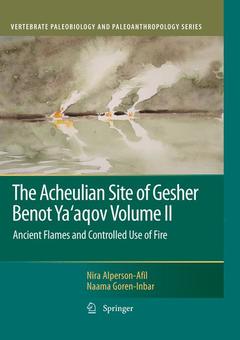Description
The Acheulian Site of Gesher Benot Ya’aqov Volume II, 2010
Ancient Flames and Controlled Use of Fire
Vertebrate Paleobiology and Paleoanthropology Series
Authors: Alperson-Afil Nira, Goren-Inbar Naama
Language: English
Subjects for The Acheulian Site of Gesher Benot Ya’aqov Volume II:
Keywords
Acheulian; Ecology; Fire; Gesher Benot Ya‘aqov; Hearths; Spatial distribution; artifacts; environment; prehistory
Approximative price 52.74 €
In Print (Delivery period: 15 days).
Add to cartPublication date: 06-2012
120 p. · 21x27.9 cm · Paperback
52.74 €
In Print (Delivery period: 15 days).
Add to cartPublication date: 05-2010
120 p. · 21x27.9 cm · Hardback
Description
/li>Contents
/li>Biography
/li>Comment
/li>
Nira Alperson-Afil and Naama Goren-Inbar both teach prehistoric archaeology at the Institute of Archaeology of the Hebrew University of Jerusalem. Their main research interest is the prehistory of the Levant, including technological, cultural, and behavioral aspects of our ancient ancestors.




